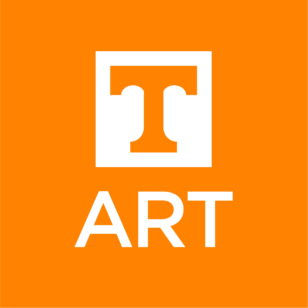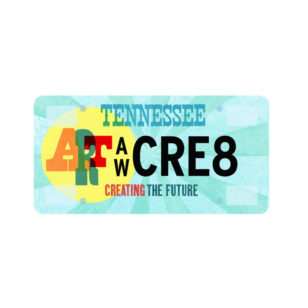INTERVIEW: RISA HRICOVSKY
FEB. 12, 2025
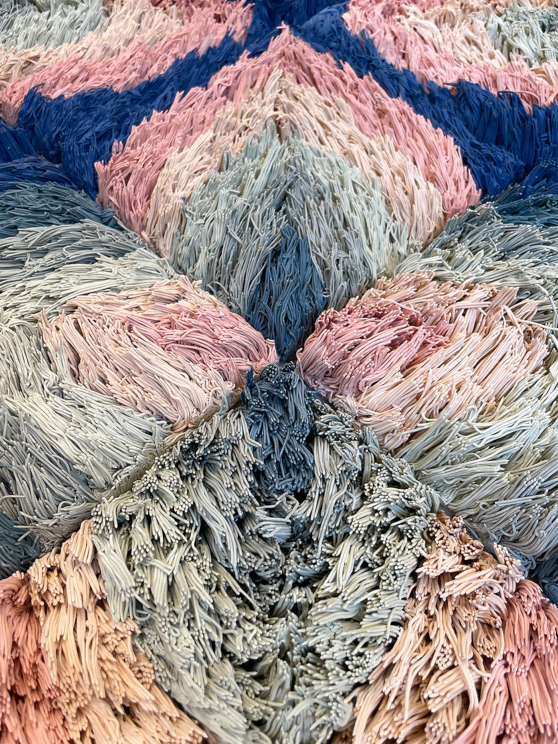
INTERVIEW: RISA HRICOVSKY
FEB. 12, 2025
Rachel Bubis: Some of your recent porcelain sculptures resemble a 1960’s era “shag rug” in texture and color. You describe how these evoke “1960s counterculture and the call for peace, love, and progressive change.” Can you talk more about what you’re thinking about in evoking this imagery but using such surprising materials?
Risa Hricovsky: The very first porcelain shag rug I made was at a time when I was working through this question: “What is Reality?” I asked myself, “What is real? How do we know it’s real? What makes it real?” Out of this, I made Quietly Paved, a shag rug that was a hyper-realistic sculptural object of a shag rug. I was very excited to create something physically rigid, visually opposing physical properties of the soft carpet. The first time I installed it, it was waked across before the exhibition opened. In fact, it’s been walked on every time it’s been installed, even on a low plinth. The Trompe-l'œil effect was successful, but it seemed that’s all it was for my audience. It wasn’t fostering the conversation I wanted to have about Reality. Feeling frustrated, I abandoned the idea altogether.
Two years later, I started to revisit the idea. I researched the history of shag carpet and thought about what a shag rug symbolized to me; I always associated it with the 1960s/1970s counterculture and free love movement. I noticed a lot of parallels between what the civil rights and civil liberties movements of the 60s/70s were fighting for and how these things are currently being dismantled or rolled back. I thought the hard shag carpet could act as a metaphor for the ideals of the 1960s being fossilized in time. Here we are 60 years later and women are losing or have lost autonomy over their bodies and rights to healthcare; wage gaps based on gender or race are nearly the same; hate crimes are on the rise; and our First Amendment rights are significantly challenged for anyone who speaks out against the genocide of the Palestinians, eerily similar to the anti-war protesters during the Vietnam War.
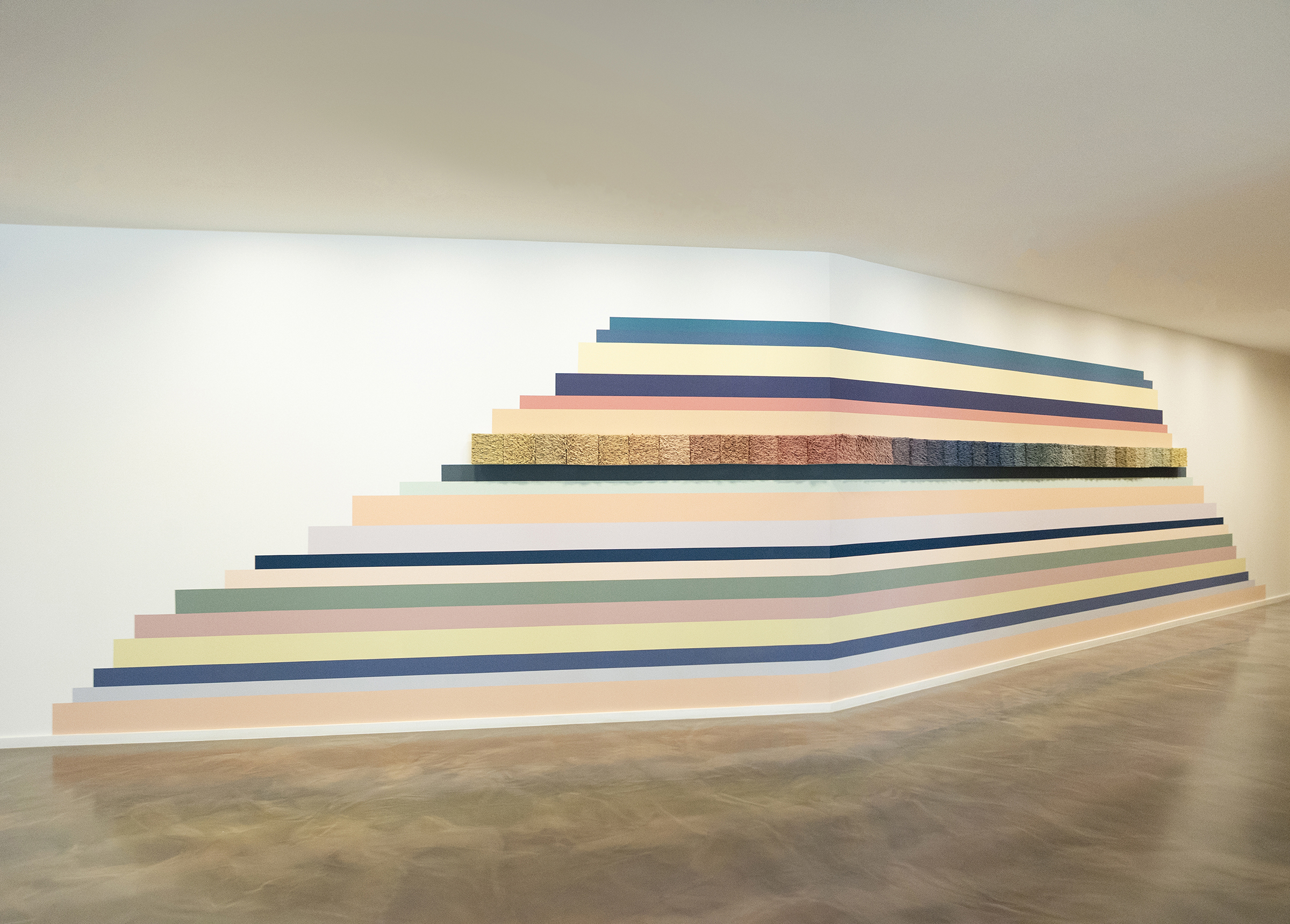
Color Surge, 2023, Installation, 9’ x 25’ x 4”, Pigmented Porcelain and Acrylic paint
RB: What’s your process in making this work/how do you achieve these fabric-like textures?
RH: The process of making the porcelain shag rugs is very labor-intensive. I take chunks of porcelain and I wedge/knead/mix colored pigment called Mason Stains into it. I do this until the stain is fully incorporated into the porcelain. Then I roll them out into little rods 3” x 0.5” and I put them through a small extruder, extruding them onto a tile of clay. I carefully transport them from my studio at the Candoro Marble Building to my kiln at my home studio in the Burlington neighborhood in Knoxville, TN. Once all the tiles have been fired to 2232 °F I glue them with PC-11 onto a wood backing with French cleats.
RB: In your work Nature of Reality you display a cactus that is real next to a cactus made out of porcelain. Do you have an interest in Trompe l'oeil in art history or are you familiar with the term skeuomorph? What interests you about blurring the line between materials or tricking the eye?
RH: My work asks the philosophical question what is The Real? I have never heard the term skeuomorph, but that is very much what I do. (Thank you for the new language!) I use materials to imitate the characteristics of things with differing physical properties. I use Trompe l'oiel, mimicry, and the uncanny valley again and again, as a tool to question, “What is reality?” I am very interested in exploring how we know something is real. Is it because of the material, is it because of the way it looks, is it because of the way it feels, smells, tastes? It’s interesting because everything physical and imagined is real because reality is both uniquely individual as well as collective.
RB: You incorporate undulating patterns like chevron in works such as Chevron Accumulation. To me, this has a disorienting effect. What draws you to these patterns? It makes me think of razzle dazzle camouflage.
RH: YES, I love razzle dazzle camouflage! I discovered that a decade ago when I was doing a lot of research about patterns. Some of my earlier pattern based work was about using a pattern as a metaphor to talk about anxiety. A pattern can be defined as having a discernible regularity with a predictable outcome. I used patterns and disrupted them as a metaphor talk about how not knowing causes anxiety. I began making what I was calling non-pattern patterns, which is an oxymoron because your brain perceives everything as a pattern. Some patterns are more disorienting than others, like the Chevron Accumulation which was directly influenced by razzle dazzle camouflage. However, just as I was discovering that, my guiding light as an artist started to change. My earlier work concerned with perception evolved to ask the question “What is reality?”
Future Rock #5074, 2024, Pigmented Porcelain, Glass, Slag glass, and Mica. 6in x 6in x 6in
RB: You describe your work Undulating Spectra, made of painted pipe cleaners, as a “painting." Why do you choose to categorize it this way?
RH: I'm interested in hierarchies: material hierarchies, medium hierarchies, wealth hierarchies, visual, hierarchies, etc. My anarchist tendencies give me the desire to disrupt these constructs. To answer your question, using pipe cleaners and calling it a painting starts to disturb these hierarchies for me. Additionally, I colored them with paint and not dye. That fact, coupled with the piece displayed hung on the wall, to me puts it in painting vernacular. In my formative days as an artist, I started out as a painter. I remember 20+ years ago reading about installation art, and the definition that I extrapolated was that installation art is a way for a painter to create a painting that a person can step into. I found that very exciting, and deep down I still consider myself a painter in a lot of ways, even though I don't make paintings in any sort of traditional way. If I hang my artwork on the wall, even if it's a sculptural object, I consider it in the lineage and language of Painting.
RB: Your works are very tactile – I haven’t been lucky enough to see them in person, but do you find people want to touch them? How do you feel about this?
RH: Honestly, I think you absolutely have to touch them! I was giving an artist talk at the Arkansas Museum of Fine Art concurrent with my solo show Then is Now, and I was asked that same question. I said, “When the museum guards aren't looking, take a little swipe against them.” Although the museum guards attending did not think that was funny, there's no possible way for your brain to understand the work without touching it. Also, if you’re ever in Knoxville, I would love for you to come to my studio sometime and touch them in person. That invitation goes out to all the readers here, too. I have a studio at Tri-Star Arts/ Candoro Marble Building in the Vestal neighborhood in South Knoxville, TN. People come all over just to see the historic building, but there are also four artists’ studios there and a gallery that rotates critically acclaimed contemporary art.
RB: Have you ever been surprised by someone’s response to your work?
RH: I’m often surprised by how people respond to my work, what they understand and what they don’t. Once, a friend of mine came to see one of my shag rugs that was on the floor. She ran her hand through it knowing beforehand that it was made of porcelain, when it hurt her hand she screamed in pain and disbelief. I found that to be a little shocking because she knew that it was hard but still attempted to handle it as though it was soft.
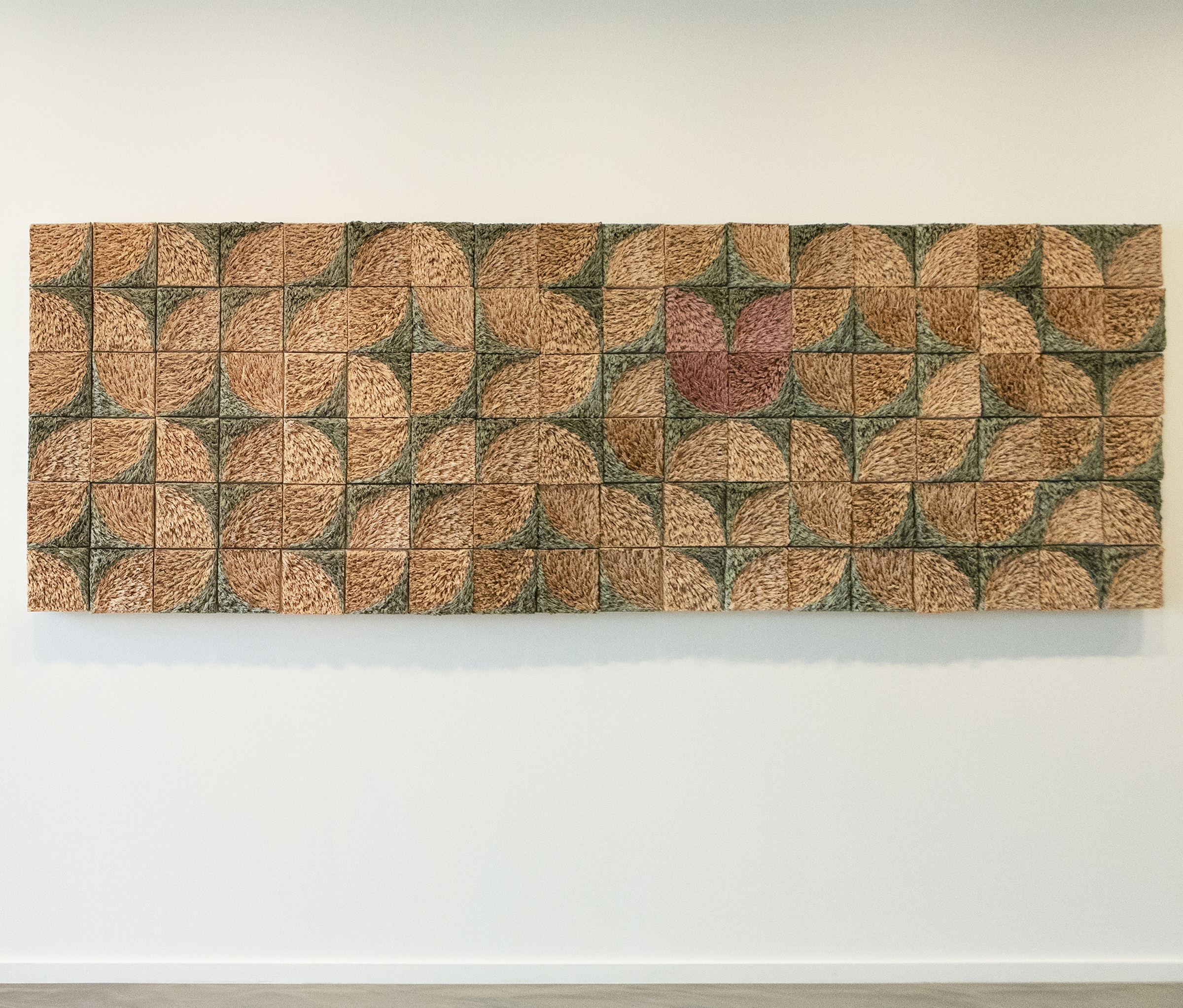
Dissonance, 2023, Ceramic, 41.5” x 124.5” x 3”, Pigmented Porcelain
RB: You work in such a wide range of materials. How do you choose them? What’s your favorite and/or least favorite material you’ve worked with? Is there a material you’ve always wanted to work with but haven’t?
RH: I use them in completely nontraditional ways. Ceramics and clay are often a big part of my work. I probably have the most knowledge and experience in Ceramics. I love clay because you can make anything out of it; its limitless potential is very inspiring. However, I do not like feeling pigeonholed into a medium.
I do a lot of experimentation. I experiment whenever I have free time. My material choice is a combination of experimenting, asking myself existential questions and then trying to make sense of the world through art making. I've honestly worked with nearly all art materials to some degree. I want to learn more about casting, specifically glass casting, metal casting, and resin casting.
RB: What are you working on now and what’s next?
RH: I have a new series called Future Rocks, rocks from a post-human existence. Recently I made several smallish-sized future rocks. I am very excited to make more!
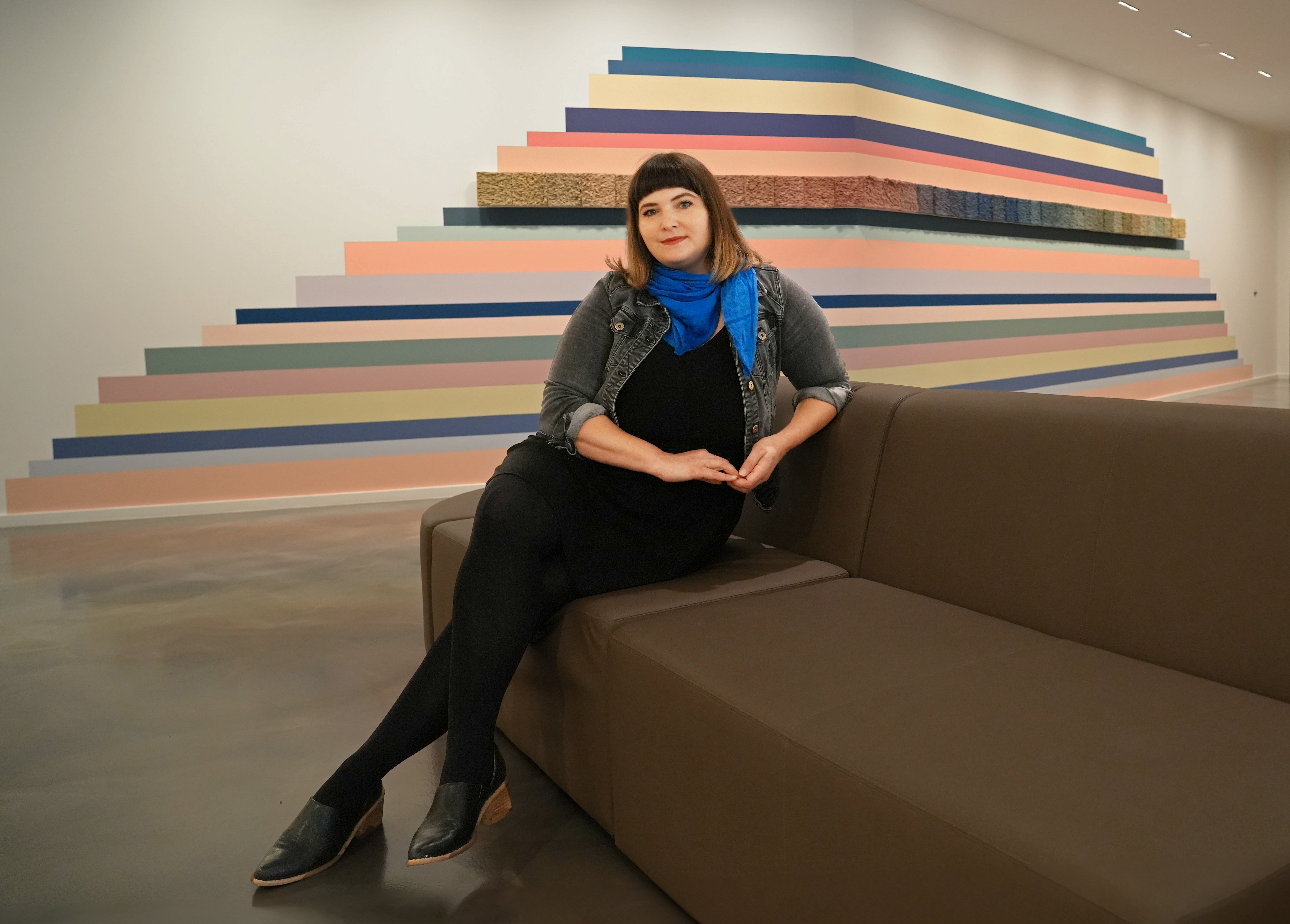
Risa Hricovsky is a sculptural installation artist. Their work pushes the boundaries between painting and sculpture, and between art, design and craft. Risa received a MFA from the School of the Art Institute of Chicago, a post-bacc from the University of Wisconsin-Madison and a BFA from Bowling Green State University. Risa has been a recipient of a Bailey Opportunity Grant, Current Art Fund Grant and won 1st place in mixed media at the Zanesville Prize for Contemporary Ceramics. Risa has exhibited nationally and internationally, most recently they had a solo exhibition Then is Now at the Arkansas Museum of Art in Little Rock, AR. Risa has attended many prestigious residencies; most notable residencies are The Studios at MASS MoCA in North Adams, MA, Guldagergaard International Ceramic Research Center in Skealskor, Denmark and SIM in Reykjavik. Iceland. Currently, Risa is an Assistant Professor of Art at Lincoln Memorial University in Harrogate, TN.
Rachel Bubis is a Nashville-based independent arts writer, regular contributor to The Focus blog, and LocateArts.org Web Manager for Tri-Star Arts.
* images courtesy of the artist
